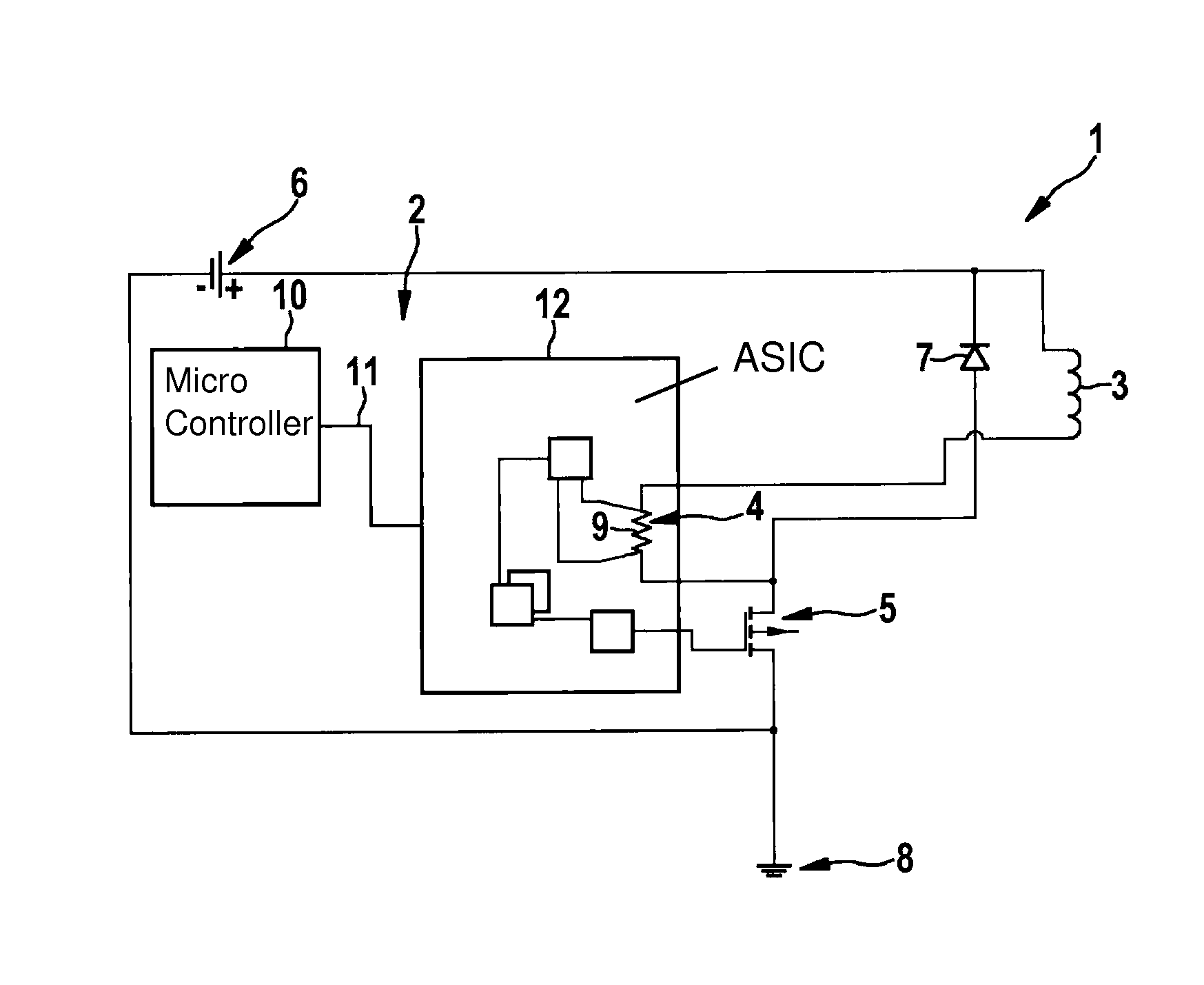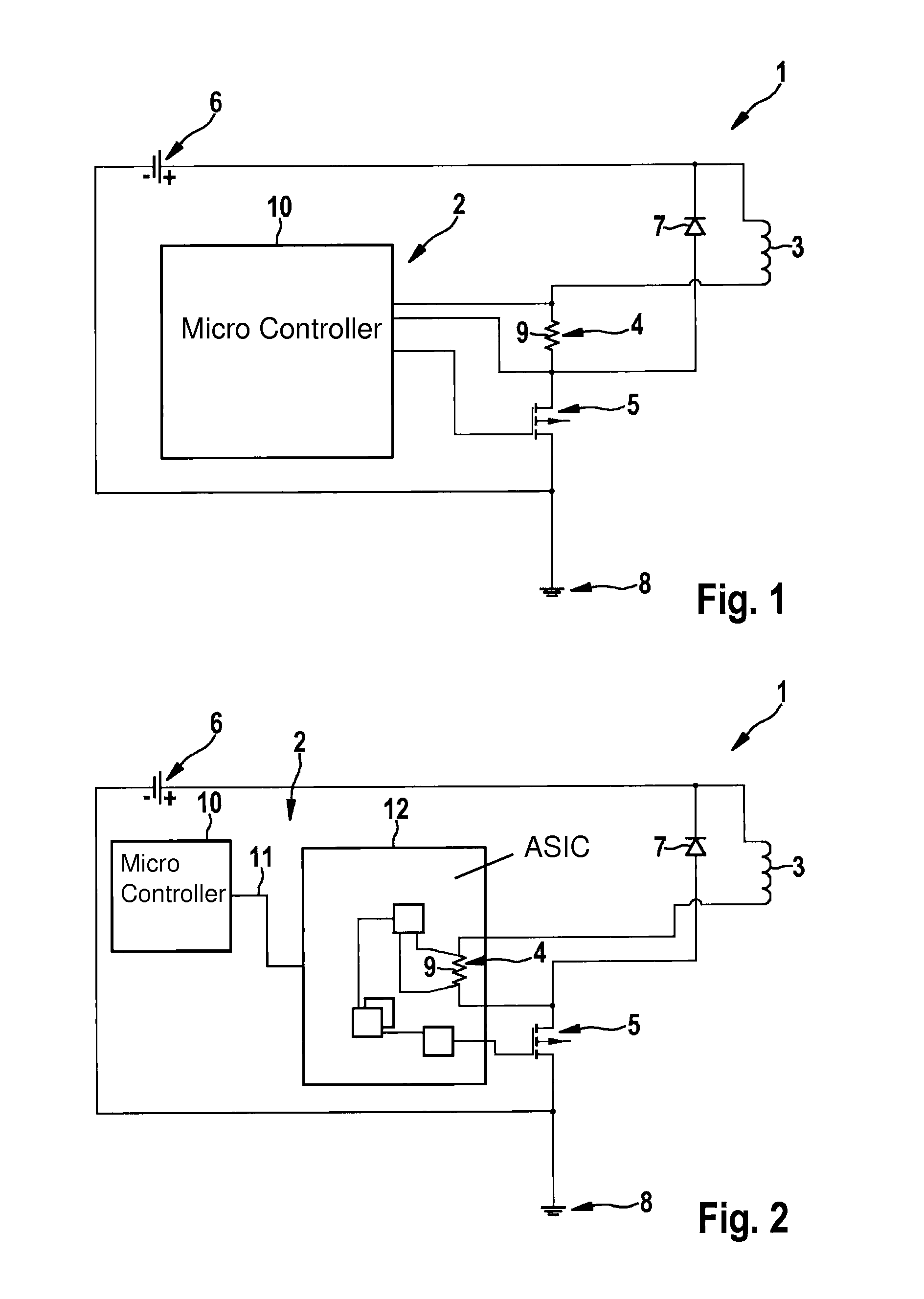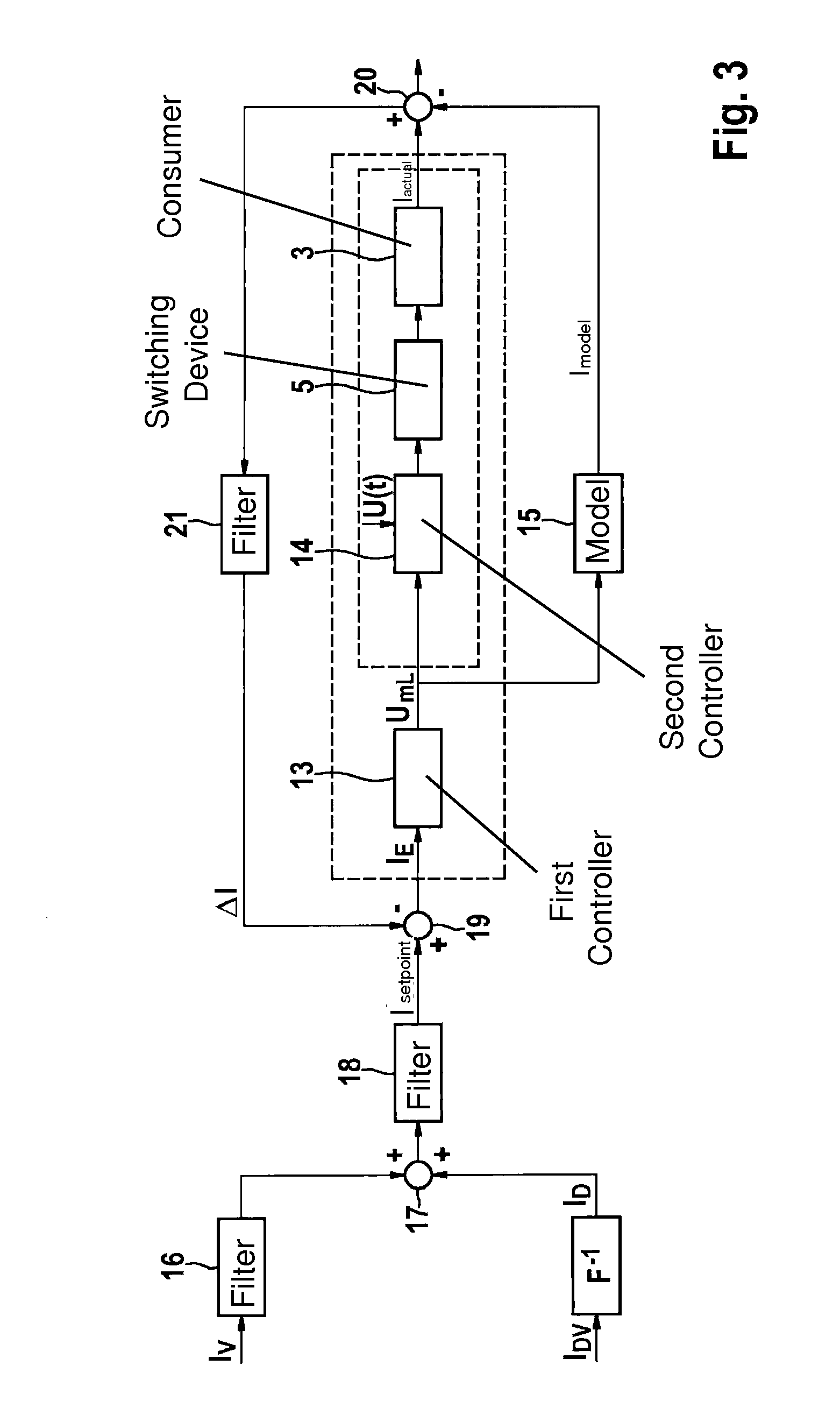Method for controlling the current intensity of the electric current flowing through an inductive consumer and a corresponding circuit configuration
a technology of inductive consumer and current intensity, which is applied in the direction of process and machine control, magnetic bodies, instruments, etc., can solve the problems of only being able to adjust the supply voltage, the exact adjustment of the current intensity cannot be easily carried out, and the changes in the supply voltage cannot be corrected. , to achieve the effect of reducing the application complexity of the system, simplifying the parameterization of the first controller, and increasing the degree of accuracy
- Summary
- Abstract
- Description
- Claims
- Application Information
AI Technical Summary
Benefits of technology
Problems solved by technology
Method used
Image
Examples
Embodiment Construction
[0033]FIG. 1 shows a circuit configuration 1, which includes a control unit 2, an inductive consumer 3, a current measuring unit 4 and a switching device 5. A power supply 6 is also provided. Connected jointly to the power supply are consumer 3, current measuring unit 4 and switching device 5, these being connected in series to one another. A free-wheeling element 7 in the form of a free-wheeling diode is connected at least in parallel to consumer 3, preferably, however, also in parallel to current measuring unit 4. The cathode of free-wheeling element 7 is connected to a positive pole of power supply 6, whereas the anode of the free-wheeling element is connected either between consumer 3 and current measuring unit 4 or (as depicted here), between current measuring unit 4 and switching device 5. Consumer 3 is present, for example, as a solenoid valve or as a coil of the solenoid valve.
[0034]The side of switching device 5 facing away from consumer 3 is connected to a ground 8. This i...
PUM
| Property | Measurement | Unit |
|---|---|---|
| current intensity | aaaaa | aaaaa |
| mean load voltage | aaaaa | aaaaa |
| voltage | aaaaa | aaaaa |
Abstract
Description
Claims
Application Information
 Login to View More
Login to View More - R&D
- Intellectual Property
- Life Sciences
- Materials
- Tech Scout
- Unparalleled Data Quality
- Higher Quality Content
- 60% Fewer Hallucinations
Browse by: Latest US Patents, China's latest patents, Technical Efficacy Thesaurus, Application Domain, Technology Topic, Popular Technical Reports.
© 2025 PatSnap. All rights reserved.Legal|Privacy policy|Modern Slavery Act Transparency Statement|Sitemap|About US| Contact US: help@patsnap.com



